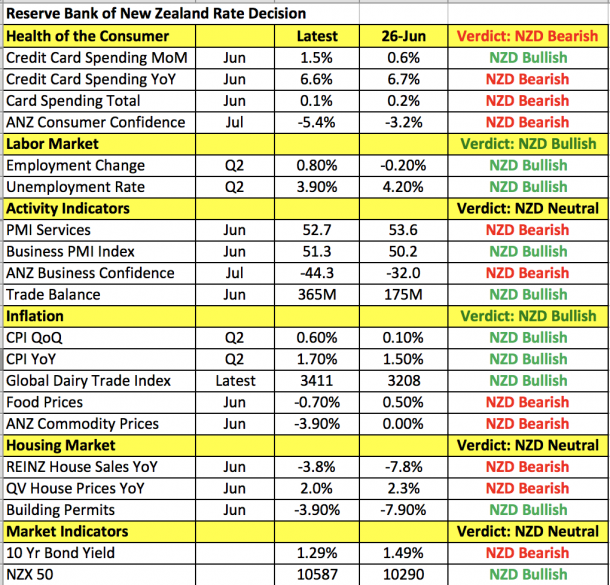Trump says U.K. would fight for U.S., doubts EU commitment
Kathy Lien, Managing Director Of FX Strategy For BK Asset Management
Daily FX Market Roundup August 6, 2019
The U.S. government looked the other way for the past 25 years but under President Trump’s watch, that is no longer the case. For the first time since 1994, the U.S. Treasury labeled China a 'currency manipulator.' China responded by denying “any use of the exchange rate as a tool to deal with trade disputes” and blasted the U.S. for taking action that would “severely damage international financial order and cause chaos in financial markets.” But instead of tanking, the Dow Jones Industrial Average stemmed its slide and the Chinese yuan stabilized. In other words, chaos did not rain down after the U.S. announcement. Everyone will agree that the currency-manipulator label has more symbolic than economic implications. It fulfills Trump’s 2016 campaign promise to slap China with the label and mandates the Treasury to “take action to initiate negotiations” and work with the IMF to remedy the problem. If no agreement is reached, the U.S. can impose further penalties and restrict U.S. government business with China.
Let's be clear: though while the Chinese yuan dropped to its lowest level earlier on Monday and it's no secret that China “manages” its currency, they meet only one of the three criterias previously set by the Treasury to declare a country a currency manipulator. The three-part test requires a major trade surplus with the U.S., a significant current account surplus with the rest of the world and persistent currency intervention. While China’s trade surplus with the U.S. is large, its global current account surplus accounts for only 0.4% of its GDP. As for the currency, it is more likely they are allowing the yuan to weaken rather than actively intervening to devalue it. Regardless, the market’s worst fears continue to be realized and this action will push China harder.
So as we wrote in Monday’s note, stocks, USD/JPY and other major currencies have more room to fall. Tuesday was nothing more than a pause before further selling. Everything coming out of China tells us that they are gearing up for a bigger response that will intensify rather than deescalate trade tensions.
Better-than-expected economic data combined with a less dovish Reserve Bank of Australia also contributed to Tuesday’s rallies. In Germany, factory orders rose 2.5% against a forecast of 0.5%. In New Zealand, the unemployment rate dropped to an 11-year low of 3.9% from 4.2% as wages surged. Australia’s trade surplus also increased but most importantly, the RBA did not ratchet up dovishness in response to the tariffs. Instead, they said they will ease further if needed but “growth is expected to strengthen gradually from here.”
The Reserve Bank of New Zealand, on the other hand, was due to lower interest rates. The last time they cut was in May and when they met in June they said “lower interest rates may be needed given the downside risks.” They were worried about the global outlook, domestic demand, house prices and business investment. Taking a look at these same measures, spending has weakened since the last month, house prices fell further, the global outlook deteriorated significantly and with the new tariffs, business investment is likely to contract further as business confidence falls to a 1-year low. The arguments were there for a rate cut and based on the decline in NZD/USD, investors have priced the move in. So the main question is whether the RBNZ sees the need to take interest rates down to 1% later this year. We think they will have no choice but to leave the door open to more easing but the language of their monetary policy statement will give us a better sense of how close they are to lowering rates again. The key level to watch in NZD/USD is .6450

Which stock should you buy in your very next trade?
With valuations skyrocketing in 2024, many investors are uneasy putting more money into stocks. Unsure where to invest next? Get access to our proven portfolios and discover high-potential opportunities.
In 2024 alone, ProPicks AI identified 2 stocks that surged over 150%, 4 additional stocks that leaped over 30%, and 3 more that climbed over 25%. That's an impressive track record.
With portfolios tailored for Dow stocks, S&P stocks, Tech stocks, and Mid Cap stocks, you can explore various wealth-building strategies.

